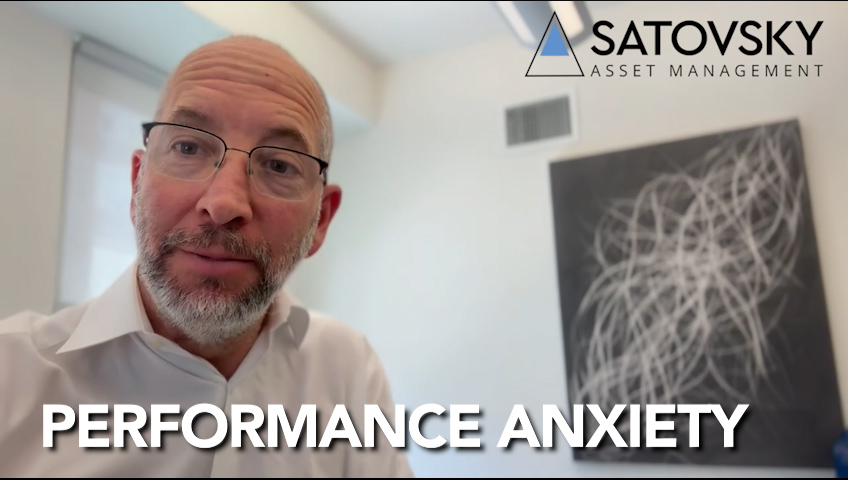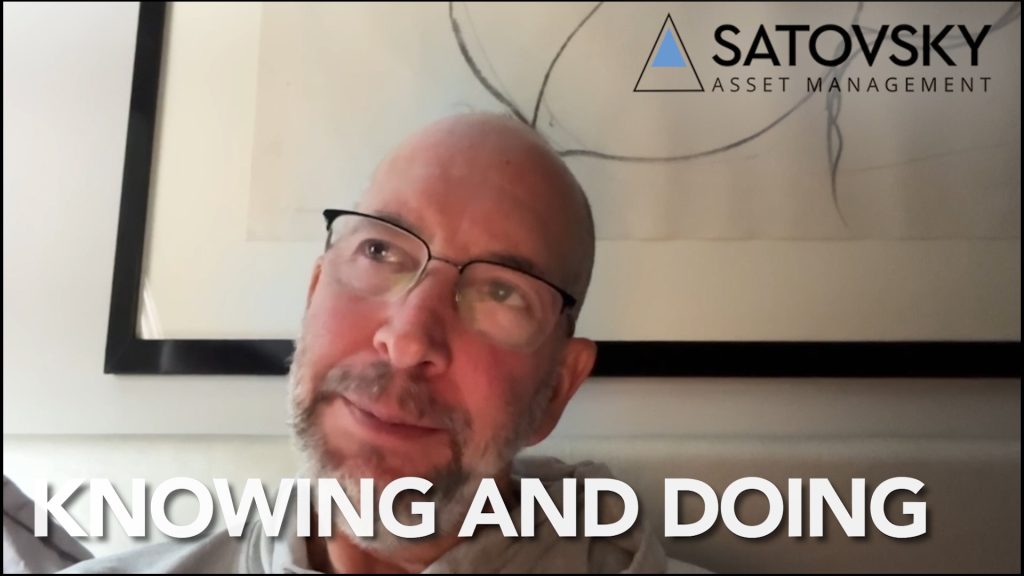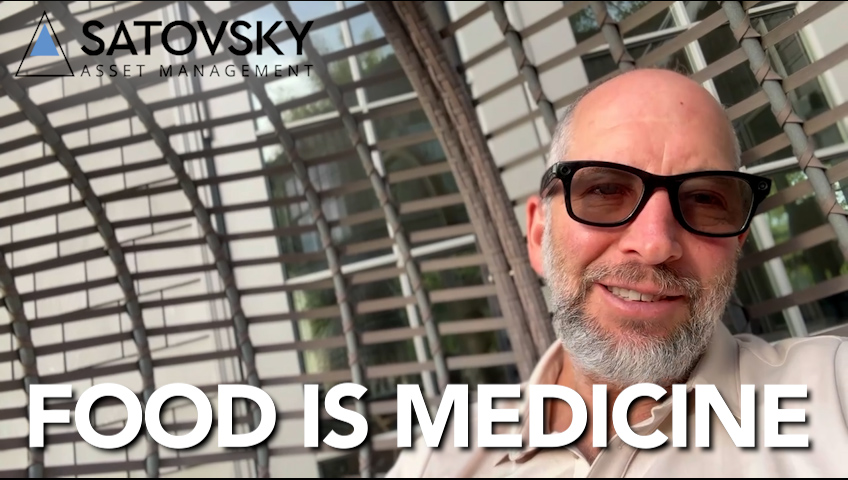About a month ago, I was planning on testing out ChatGPT by having it write the quarterly commentary this quarter, but the volatility in the banks upended that plan. So I guess I’ll have to wait.
To understand what is happening to banks, it’s vital to understand their business model. The way a bank works is that it takes in deposits and lends the money to individuals and corporations. The bank makes money by paying much less for its deposits (recently close to zero) than it receives on its loans earning the “spread”1 between the two. For example, if it pays zero for its deposits and received 3% on a loan, it would keep the 3% difference every year.
For “demand” deposits, such as checking and savings accounts, customers can withdraw their money at any time (CDs etc. usually have some term to them but are usually short). The money banks lend, in the form of mortgages, auto loans, corporate loans, etc., get paid back over many years. Because of the timing mismatch, banks can’t lend out all of their money; they need some access to cash in case depositors ask for their money. Rather than keeping large amounts of cash (which earns them nothing), they invest the money they don’t loan out in marketable securities that they can sell to raise cash (or pledge to the Fed to get cash) to satisfy depositors withdrawal requests. This can get much more complicated in a lot of ways2, but for the point I’m trying to make, simple is better.
Almost all of the time, this set up works out. While any individual depositor can request their money, deposits tend to be “sticky”, i.e., overall balances across depositors don’t change that much. But what if everyone wants to take their money out all at once? The bank, which has already loaned out a significant portion of the money, doesn’t have the money to meet withdrawals. This is the classic “run on the bank” and if you’ve seen It’s a Wonderful Life you know about this (“The money’s not here. Well, your money is in Joe’s house…”).3 It’s important to understand that this issue is endemic to the way the system is set up—all banks, even profitable and solvent ones, would fail if faced with a bank run absent actions from the government. Banks try to guess how much access to short-term cash they are going to need, but there is almost always a mismatch where the assets (loans and securities) are longer duration than the liabilities (deposits plus debt and equity).
In an effort to ward off panic before it happens, the government set up the Federal Deposit Insurance Corporation (FDIC), which insures up to $250,000 per account owner in any bank. The thought behind this is that if people’s deposits are insured, there would be no reason to take money out of the bank, even if there were rumors of a bank run. For most individuals, that limit is sufficient. But for companies who use banks to pay bills (including payroll), they routinely have more than the insured limit in their accounts.
Another key thing the government offers banks is the ability to pledge assets for cash. The so-called Federal Reserve “discount window” allows banks to avoid being a forced seller of securities to meet redemptions. The idea here is that if banks were forced to sell large volumes of assets, the prices would be forced lower, which would increase panic among depositors. These and other mechanisms work—until they don’t.
In simple terms, here’s a review of what happened. It started with Silvergate, which was a regular bank until it started pivoting to focus on crypto in 2013. If you were a crypto exchange, you most likely deposited your dollars at Silvergate. In late 2022, FTX collapsed, and many people closed their crypto exchange accounts all at once. This forced Silvergate to sell its bonds to pay out depositors. But at the same time that depositors were asking for their money back, interest rates were rising dramatically (from the Fed pushing up interest rates). As interest rates rise, bond prices fall. Right when Silvergate needed the money, the value of their assets declined due to rising interest rates. The losses were so large, that the bank decided to wind down.
A critical insight here is that if the depositors hadn’t left, the bank would have just held the bonds to maturity and had enough to pay back all depositors. There was no credit issue with the bonds. It was just that the value of the bonds declined right when they needed to sell them to satisfy the withdrawals. This is in contrast to 2008, when banks were facing credit losses associated with bad bets on mortgage-backed securities and certain derivatives. The issue here was that too many of its depositors were from the same industry (crypto), and too many of them asked for their cash at the same time.
This episode didn’t immediately scare anyone else because people thought it was unique to Silvergate’s crypto exposure. What other bank’s depositors would all want to leave at the same time? It turns out that the very next day, Silicon Valley Bank (SVB), a bank which caters to venture capital firms, attempted to raise capital to plug a hole in its balance sheet. Venture capital-backed firms are known to burn through cash, but in late 2022 these firms started having trouble raising new capital, which led to a rapid decline in deposits at SVB. As SVB saw their deposits leave quickly they were forced to sell assets at a loss due to rising interest rates, similar to Silvergate.
Because SVB catered mostly to tech companies, nearly all of its deposits were uninsured; as of December 31, SVB had $173 billion in deposits, and only $8 billion were insured by the FDIC (based on the $250,000 insurance limit). Major backers of venture capital-funded companies jumped on the bandwagon, encouraging portfolio companies to leave SVB, exacerbating the problem. Another run on the bank, and this time not a crypto bank. In a couple of weeks in March, SVB’s deposits had declined to less than $60 billion, the capital raise failed, and the bank was taken over by the government.
Just like Silvergate, there were little to no credit losses in the portfolio— much of the securities they owned were US Treasuries. But since interest rates rose their value declined just when SVB needed to sell them to raise capital for deposit redemptions.4 If the depositors had stayed with the bank, it would likely still be around today.5
And if you think about it, it wasn’t crazy for SVB to think that their depositors would be loyal. It invested a lot in its relationships with its depositor customers; it supported them when times were tough, it gave them loans no one else would give them, and it had good customer service. Also, apparently some of SVB’s loans contained covenants requiring the recipient company to keep their deposits at SVB, so at least some of the customers couldn’t leave. Nonetheless, that theory turned out to be very wrong.
In an effort to contain the possible contagion, the government decided to insure all deposits at SVB, regardless of the $250,000 limit, in order give people some confidence to keep deposits at the bank (and trying to imply without stating it outright that they would do it for other banks too. But no guarantee!). They also allowed banks to borrow from the government based on the par value of the bonds they own, versus the current market value.
In March, there were fears of contagion (in part by the takeover of Credit Suisse by UBS but also with banks thought to be similar to SVB, like First Republic). However, I don’t foresee this being a systemic problem. Quite frankly it’s probably good for the largest banks (if you are nervous, you go to what you perceive as the safest banks, which are generally the largest ones). Remember, there is no credit issue here, and the government has the means to do more if necessary. Thus far, the government seems to have contained the fallout. Many banks are having and will continue to have some issues with this; it’s just likely to be temporary (for almost all of them, even if a couple more go under). If it becomes a problem, it will be because of a permanent shift away from deposits to other investments, such as money market funds. Since the Federal Reserve started raising rates, deposits in banks have declined by $800 billion and money market accounts have increased by $600 billion.6 But deposit outflows from banks seem to have subsided in the last couple of weeks, and borrowings from the emergency discount window have declined as well. A more probable fallout from this is that banks are likely to pull back on lending in order to shore up their balance sheets, which could lead to a slowdown in the economy. We are already seeing some evidence of this, and we are tracking the data closely.
There have also been some questions about Fidelity given the news reports about Schwab. The two business models are different, however. Part of Schwab’s business model is to sweep all cash into the Schwab bank (paying interest rates similar to banks, meaning next to nothing), and invest the cash in higher yielding securities, just like other banks. Similar to Silicon Valley Bank, they have unrealized losses in the “held to maturity” portfolio which is causing some concern.
In contrast to Schwab, Fidelity sweeps cash to a Fidelity money market account from which they take an asset management fee. This not only has given Fidelity clients higher rates of interest on their cash (recently over 4% vs. 0.45% at Schwab), but also if someone took cash away from Fidelity, they would have to sell some mutual fund assets, but it wouldn’t require them to sell any assets that they own at a loss. In addition, custody assets are required to be held in segregated accounts, which aren’t comingled with corporate assets. So while you can never be 100% sure, we feel very comfortable about Fidelity being our custodian.
Interesting stories from the quarter.
In last quarter’s commentary I told the story of receiving an email asking for $1,500 to be honored as a Top 10 Finance Leader of 2022. Another quarter and it only got worse, this time from Banking CIO Outlook Magazine:
I am pleased to inform you that we have shortlisted Satovsky Asset Management to feature as one of the Top 10 Wealth Management Service Providers in our 7th annual edition on Wealth Management. We want to feature Satovsky Asset Management with a profile in this edition…
It’ll be an excellent platform for Satovsky Asset Management to be included alongside [other industry leaders] in this annual issue…
The expense for the reprint rights of the profile mentioned above is $3,000. Along with the print and digital rights to the reprints, we will also provide a logo and a Certificate of Honor to utilize in your client acquisition efforts…
I didn’t bother responding this time.
During the NFT craze (which we wrote about in several letters last year), one entrepreneurial person, Mason Rothschild, decided to create a computer rendition of a Hermès Birkin bag, call the picture a “MetaBirkin bag”, and sell it to people as an NFT. At peak, each of his hundred MetaBirkin bags were worth tens of thousands of dollars. He was unaffiliated with Hermès.
Hermès sued Rothschild, saying that he was violating Hermès’s trademark. His defense?
…his NFTs were works of art protected by the First Amendment, no different from Andy Warhol’s famous silk-screen prints of Campbell’s soup cans. His attorneys characterized the NFT project as an “artistic experiment” that examined how society places value on status symbols.”7
The scary thing is that I can see how that argument has merit. But as Matt Levine states, that is Hermès’s whole business model: to see how much value society will place on status symbols—the original Birkin bag being one of them! You don’t need a MetaBirkin bag for that. Well, just last month, a jury determined that the NFTs were more akin to consumer products and therefore subject to strict trademark laws that protect brands, not a piece of art. Levine concludes:
In some sense anyone who does any scam is running an artistic experiment that examines how much money people are willing to give them, but that is not a defense!…Man what an embarrassing time the NFT boom was.8
If you couldn’t tell from prior letters, we couldn’t agree more.
In one of the dumber things I’ve heard in a while, World Wrestling Entertainment (WWE), the largest professional wrestling company, has held discussions with state gambling regulators in Michigan, Indiana, and Colorado to legalize betting on their matches.9 The problem is that all of the matches are scripted! WWE is working with Ernst & Young, to secure match results so they won’t leak to the public; they don’t plan to inform wrestlers who will win until hours before a match. Who wants to bet on scripted match that’s so simple to fix (they are all fixed after all)! Another way to con people to part with their money. Crazy!
I recently saw this article in the Wall Street Journal10 which highlighted that the acronym TINA is now passe. For the uninitiated, TINA stands for “there is no alternative”, and it referred to stocks, when bond yields were near zero. Now with rates up, Goldman Sachs has called the shift “TARA” (there are reasonable alternatives), Deutsche Bank has named it “TAPAS” (there are plenty of alternatives), and Insight Investment came up with “TIARA” (there is a realistic alternative). At SAM, we say don’t get caught up in the acronym flavor of the month. Two of us attended a conference hosted by Columbia Business School11 where Cliff Asness, a founder at AQR Capital Management, said
The definition of insanity is doing the same thing over and over and expecting a different outcome. Sticking with a great investment process when it feels like it’s punishing you over and over isn’t ‘the definition of insanity.’ It’s your job.”
Thanks for your continued confidence in us.
Avi and the SAM team




